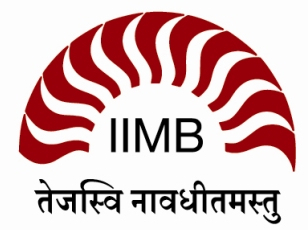Restructuring the Truck Terminal Infrastructure in Karnataka
Faculty Contributor : S. Nayana Tara, Professor
Student Contributors : Mitranjan Bhaduri, Nithin Chandra G.S., Nishant Kumar Ojha and Debashish Sadangi
Owing to the steady growth of industrialisation, there has been a steep rise in the traffic load on the highways and in the central business districts in Karnataka. The Karnataka government has been trying to come up with truck terminals in Karnataka for some time to address a number of ever growing issues especially in and around the central business districts and along the major highways. The aim has been to reduce the congestion, pollution, damage to roads and accidents on the city roads and the highways. This article explores the possible locations of truck terminals in Karnataka. It also looks at the possible models to determine capacities of such terminals and to address the different needs.
As per the traffic pattern on the highways and the central business districts, the objectives for the terminals and their models have to be different for the highways and busy commercial districts. Most issues with the highways (accidents, congestion) would fall under the Transit objectives whereas the issues with the central business districts would fall under the Origin/Destination (O/D) objectives. Thus, the O/D terminals can address the issues of congestion, road quality, noise/air pollution and accidents in and around the busy commercial districts.
The major reason for the underutilization of truck terminals is their portrayal as facilities for idle parking. There is a need to introduce incentives for the truckers and the transport operators (TO) to use the truck terminals. Therefore both kinds of terminals need to provide basic social amenities such as rest houses, communication facilities, eating, houses etc. The truck terminals need to develop into centralized zones for the TOs to operate from. The terminals, especially the O/D variety need to have facilities like safe and adequate loading and unloading operations, weigh-bridges, warehouses, and automobile spare part stores. To ensure non-obsolence of the terminals with the development of the business districts and population increase a time horizon of at least 20 years is required for all plans and development. Therefore, we suggest two models for the truck terminals, namely Origin/Destination and Transit models.
Truck Terminals Models Proposed
Exhibit 1 is a comparison of the facilities required at the two types of terminals and Exhibits 2 and 3 illustrate the models.
| Facilities to be provided in O/D and T Model |
| Facility |
Parameters for providing the facility |
O/D Model |
T Model |
| Idle parking space |
Each truck will generally require about 80Sq ft of idle parking area. The parking area should be well marked and numbered for better idle park management. |
5%-10% |
Over 60% |
| Dormitory |
About 125 Sq ft per bed(including land required for other facilities that should be provided within the dormitory) |
6%-7% |
2%-3% |
| Sanitary Facility |
Toilets, bathrooms, washing and drinking water |
Required |
Required |
| Transport Operators Office |
Creating a hub of transport operators within the truck terminal compound encourages consolidation. Also the building must be created uniformly by the truck terminal so that there is efficient usage of space and for enabling better management of the terminal |
Required |
Not Required |
| Cross Docking/ Bulk Breaking Yard |
The space requirement for this yard can be calculated based on the methodology described in the section on determination of the capacity of truck terminal |
Required/Not required, based on the needs of the area |
Not Required |
| Restaurant and Retail shop |
To serve clean and hygienic food and provide basic articles of general use |
Required |
Required |
| Medical Facility |
A health care facility to care for general health of the truckers as well as to create awareness about diseases such as AIDS, dengue etc that the truck drivers are more prone to. |
Required |
Required |
| Banking Facility |
To help the transport operators to carry out financial operations within the truck terminal |
Required |
Not Required |
| Office for the maintenance staff |
Personnel involved in idle parking management and other activities related to maintenance of the terminal |
Required |
Required |
| Weigh Bridge |
Not Applicable |
Required |
Not Required |
| Service Station |
Not Applicable |
Required |
Required |
| Fuel Pump |
Not Applicable |
Required |
Required |
| Post Boxes & public telephone booths |
Not Applicable |
Required |
Required |
Exhibit 1 Comparison of O/D and Transit truck terminal models
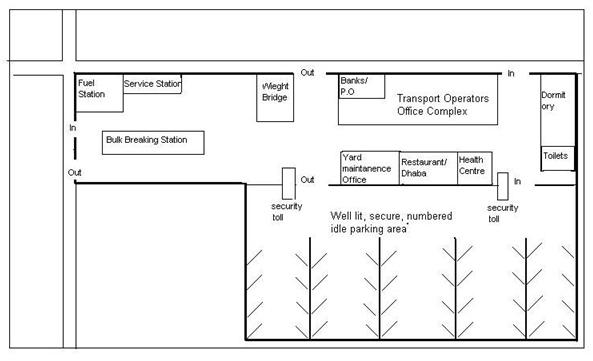 Exhibit 2 Model O/D Terminal
Exhibit 2 Model O/D Terminal
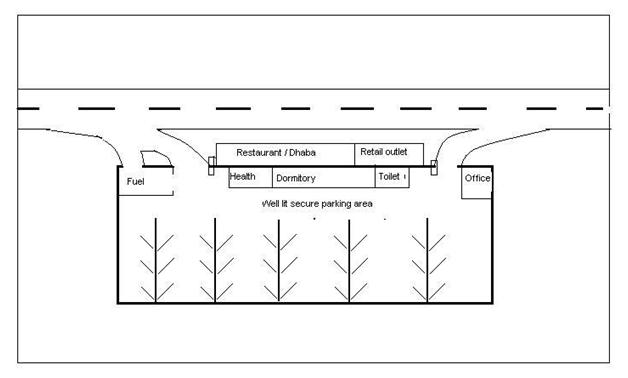 Exhibit 3 Model Transit Terminal
Exhibit 3 Model Transit Terminal
We follow the ten step process below to identify the prospective locations for the terminals:
-
Identify all locations across Karnataka where the truck traffic (single, dual and multiple axle trucks) is above a certain cutoff
-
The cutoff load factor can be identified by keeping a value of one truck every “n” seconds on an average
-
After identifying the potential areas, note the ratio of truck traffic to normal traffic (total passenger car units (PCU)). A high truck/PCU ratio would mean a higher percentage of truck traffic on the road, which could potentially mean a lower average speed, more congestion and hence would warrant more attention to set up a truck terminal
-
Existing areas across Karnataka should be identified where the industrial activity is high
-
A need to identify areas which are expected to improve their industrial activity in the coming years due to either governmental action or other exogenous factors
-
The reason for high traffic flow across these points and the nature of goods transported need to be identified
-
The transit points and bottlenecks across the network need to be identified
-
All possible O/D points across the state need to be identified from the current traffic data or industrial activity
-
The O/D locations need to be ranked based on the relative importance of the truck terminals in the location
-
Finally transit locations need to be identified based on the O/D points located in step 7 and other considerations
The above guidelines were used to identify the possible locations of truck terminals in the state
Locations Identified for Truck Terminals across Karnataka
As per the findings there are two categories of prospective locations: immediate and emerging focus areas.
Immediate focus areas:
These are the areas that have a high density of traffic with a high truck to other vehicle ratio. A few of these areas have already been marked for building truck terminals by the government.
Bangalore Area
As illustrated in Exhibit 4, major logistic hubs have been developed around Bangalore. The terminal at Yeshwantpur does not serve its purpose. However, there is a difference between the area near Sadahalli and Devanahalli which is a logistical hub and the area near Yelahanka along Bellary Road which has been acquired by the government. There is a truck terminal proposed in Nelamangala area but it is felt that making a truck terminal in an area along the NICE Road would be best as it would serve the traffic from 2 separate highways connected by the NICE Road. In the case of the electronic city area, there are already 2 truck lay bys which have been developed by the National Highway Authority of India (NHAI) which could be used. Further, land under NHAI could also be utilized for developing the truck terminal.
 Exhibit 4 Major logistics hubs around Karnataka
Exhibit 4 Major logistics hubs around Karnataka
Transit Terminal at Homnabad Junction(Bidar District)
Homnabad lies at the intersection of the highways joining Bidar, Gulbarga and Balki and is thus a high truck traffic area. The Homnabad count station on the state highway to Bidar registered a truck traffic of 6234 trucks/day and a truck/PCU ratio of 0.179. The neighboring stations of Basavakalyan and Chitguppa showed counts of 6029 and 4992 per day respectively.
Considering these facts a transit terminal somewhere between the Rajeshwar and Homnabad junction on the National Highway 09 would be appropriate (Exhibit 5).
 Exhibit 5 Transit terminal at Homnabad juntion
Exhibit 5 Transit terminal at Homnabad juntion
O/D Terminal at Tunga Badhra Dam Circle towards Kudatini (Bellary district) andTransit Terminal at Kudligi (Bellary District) (Exhibit 6)
Owing to the booming mining and steel industry, this area has unusually high truck traffic as well as a high truck/PCU ratio.
The O/D terminal could take care of the loading unloading requirements owing to the mining activities in the district. It is however felt that the D. Deoraj Urs Truck Terminal Limited (DDUTTL) could collaborate with the Hassan Urban Development Authority (HUDA) which is already planning a truck terminal of capacity 545 trucks.
The transit terminal would be effective in managing the heavy traffic density and act as a first stop point for traffic originating from Bangalore, moving towards Bijapur and Pune.
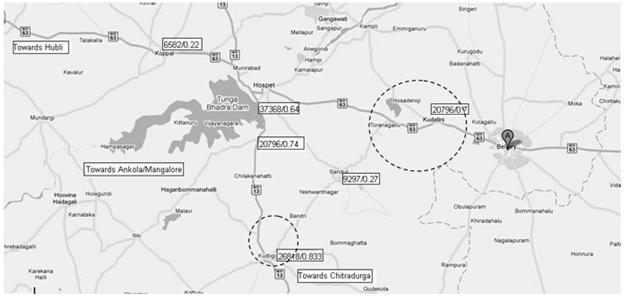 Exhibit 6 Terminal locations in Hospet district
Exhibit 6 Terminal locations in Hospet district
Transit Terminal at Baleguli (North Canara District) (Exhibit 7)
The count station here has an extremely high truck count and truck/PCU ratio. This is also a point from where the trucks start to climb up the Western Ghats through the Yellapur-Ankola section. A transit terminal here could be quite effective in reducing stress induced accidents on this stretch.
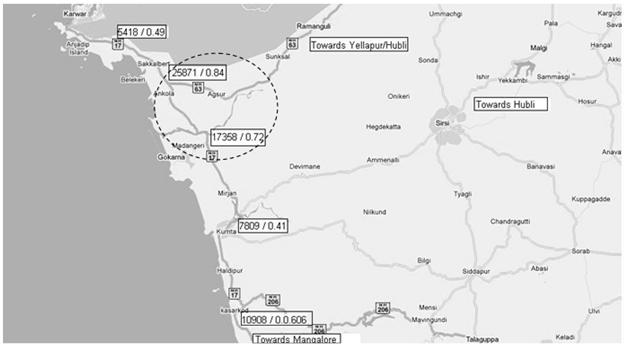 Exhibit 7 Terminal locations in Baleguli
Exhibit 7 Terminal locations in Baleguli
O/D Terminal at Shimoga (Exhibit 8)
Shimoga is fast growing as a manufacturing and agri-products hub. Shimoga experiences heavier truck traffic on the eastern side than on the western side, since the Western Ghats cover its west side. It is poised to develop as a manufacturing hub and significant investment plans proposed in the recently concluded Karnataka Global Investors Meet (GIM). Hence an O/D terminal between Shimoga and Bhadravati would ideally serve trucks originating out of Shimoga and Bhadravati.
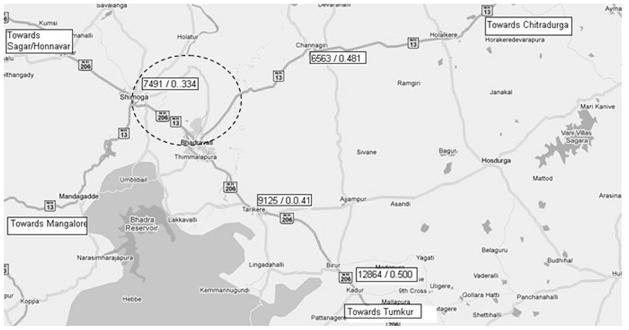 Exhibit 8 Terminal locations in Shimoga
Exhibit 8 Terminal locations in Shimoga
Areas Already under the Radar
The NHAI is actively pursuing a lot of projects on the highways under its purview. Mangalore too, being the epicenter of port connectivity, is being targeted by them. In addition, many lay-bys have been planned or proposed in the area.
Suggestions: Areas for Future Needs
- Conversion of the Homnabad terminal to an O/D truck terminal – Going forward the Bidar-Gulbarga belt will develop into a hub for cement, garments and IT. It would be appropriate to build a transit terminal first and acquire buffer land along with it to keep the option open to develop this terminal into a full-fledged O/D terminal in the future
- O/D terminal to serve the Chitradurga and Hiriyoor section – The requirements in this area can currently be served by the Kudligi transit terminal but going forward, Chitradurga is supposed to be the starting point for three Suvarna Karnataka Development Corridor (SKDC) sections and Hiriyoor is to be connected to Gulbarga. Moreover, the area is also slated to develop as a hub for cement, power, defense, auto and auto ancillaries
- Transit cum O/D terminal at Bijapur to serve corridor 5 under SKDC – The need for this is dictated by the fact that the Bijapur and Bagalkot regions are to be developed as a hub for cement, food products and power generation. In fact, already the traffic at Zalki cross (about 50Km north of Bijapur) is exceeding 8000 trucks per day with truck/PCU ratio of over 0.6
Models for Determination of Capacity of Truck Terminals
Transit terminal: To calculate the capacity one could start with a reasonable assumption that the truck arrivals follow a Poisson distribution with mean per hour = Total Daily Traffic Load/24. Practically of course there might be substantial variations between different times during the day. In such cases the model could be modified under the assumption that the arrivals at different periods follow Poisson distribution with different means and calculations could be based on the highest mean.
Further it is necessary to find the average number of hours a truck would stay in the terminal. Observing variations in existing lay bys could give an indication of the distribution that can be fitted.
Since long haul trucks are more likely to use the terminal, there is a need to find out the number of total trucks plying though the area that would be long haul.
The last important factor which needs to be incorporated in such a model is the probability of a truck not getting parking space in the terminal which is a measure of the service quality at the terminal.
Of course in calculating the size, allowances should also be made for the growth rate of traffic over the years.
O/D Terminal: The capacity estimation for this model included two parts:
- The first part deals with the parking space requirements for the trucks. The calculations for this are approximately the same as those for the transit Model.
- The second part deals with estimation of berths required to fulfill the loading/unloading needs of the trucks. This can be calculated using queuing theory.
Future Direction
In addition to the what the article has already discussed regarding the two models, the locations and the capacity requirements of the two models, there is also a need for coming up with a revenue model for the terminals so that sustainability would not be dependent on government funds. The government could use Public Private Partnership (PPP) models for more efficient and self sustainable operations. Even after building the truck terminal it is important that the government motivates the truck operators and drivers to use the terminals. Stage-wise imposition of restricted entry and ultimately total cordoning of trucks within the city/town area should follow this up. Truck terminal infrastructure across the various bottleneck transit and origin/destination points in Karnataka would go a long way in decongesting the roads and making road travel safer for everyone.
Conclusion
Several locations have been identified in this article which will be served well by a new truck terminal. A model based on queuing theory has also been proposed to determine the capacities of the truck terminals. Going forward, these terminals are expected to solve the traffic related problems in Karnataka. However, the success of these terminals is critically dependent on government policies and incentives.
Keywords
Truck Terminal, India, Karnataka, Commercial Vehicles, Logistics hubs, Government, Transport department
Contributors
S. Nayana Tara is a Professor in the Public Systems Area at the Indian Institute of Management Bangalore. She holds a PhD in Education from the US and is also a member of the Karnataka Knowledge Commission. She can be reached at
tara@iimb.ernet.in.
Mitranjan Bhaduri (PGP 2009-11 at IIM Bangalore) holds a B. Tech. in Computer Science from Institute Of Engineering and Management Kolkata. He can be reached at
mitranjan.bhaduri09@iimb.ernet.in .
Nithin G.S. Chandra (PGP 2009-11 at IIM Bangalore) holds a B. Tech. in Computer Science from National Institute of Technology (NIT) Surathkal. He can be reached at
nithin.chandra09@iimb.ernet.in
Nishant Kumar Ojha (PGP 2009-11 at IIM Bangalore) holds a B. Tech. in Mechanical Engineering from Indian Institute of Technology (IIT) Kharagpur. He can be reached at
nishant.ojha09@iimb.ernet.in
Debashish Sadangi (PGP 2009-11 at IIM Bangalore) holds a B. Tech. in Electronics and Communications from National Institute of Technology (NIT) Rourkela. He can be reached at
debashish.sadangi09@iimb.ernet.in
